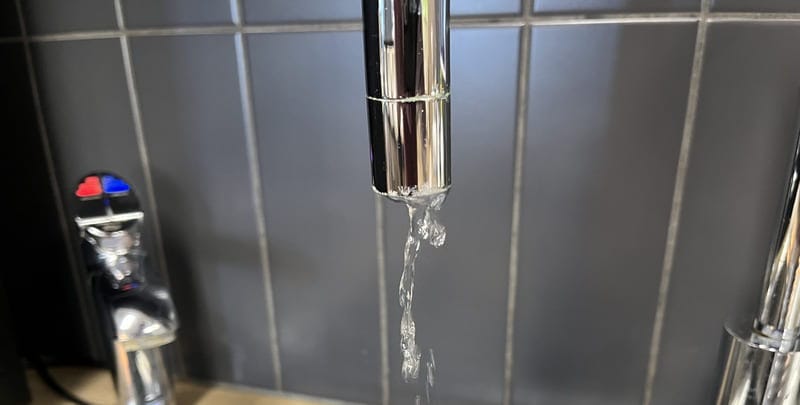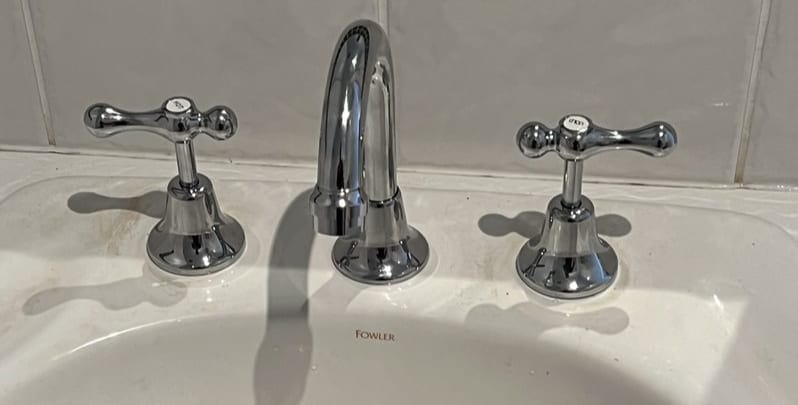What Causes a Leaking Tap?

If there's a common plumbing issue that plagues many homes across Australia, it's the leaking tap. They lead to wasted water, higher bills, and potential damage to your house. Even a slightly dripping tap can become a steady flow, causing significant problems over time.
Today, we’re here to explore the typical culprits behind a leaking tap, such as worn washers, faulty seals, and corroded valve seats. By understanding these issues, you’ll be better equipped to address them promptly and get out of hot water. We’ll also cover some basic DIY fixes to help keep your taps in good working order, saving you money and and getting your water flowing as it should. Without future hassles.
Understanding the Anatomy of a Tap
To fix a leaking tap effectively, it’s crucial to understand its anatomy. Most taps in Australian homes consist of several key components. They include the:
- tap handle
- spindle
- tap bonnet
- tap skirt or cover plate
- valve seat
- jumper valve
- O-ring, and
- rubber tap washer
The spindle connects the handle to the valve seating, controlling the water flow. The tap bonnet holds the internal parts together, while the jumper valve and washer create a watertight seal. The tap skirt is the decorative cap that gives your tapware its visual appeal.
Mineral buildup from hard water can corrode the valve seat, causing a leaky tap. Knowing how these parts interact can help homeowners identify and address plumbing problems, making DIY repairs more successful and reducing water waste.

Common Causes of Leaking Taps
Leaking taps are a frequent issue for Australian homeowners, often resulting in water waste and higher bills. Understanding the causes can aid in resolving them effectively:
- Worn-out Washers: Arguably the most common cause of a leaky tap, a broken washer or jumper valve can lead to a poor seal, allowing water to drip continuously.
- Loose or Damaged O-rings: These create a seal around the spindle, and their damage or dislodgement can lead to water leaking from the tap body.
- Worn Cartridges: In mixer taps, a worn cartridge can lead to improper water flow control, causing drips.
Addressing these common issues promptly can fix a leaking tap, saving water and preventing damage to your house.
Hard Water and Its Impact on Taps
Hard water, common in many regions of Australia, can drastically affect taps and their performance. The high calcium and magnesium content in hard water results in mineral build-up on internal tap components. Over time, this accumulation can corrode the valve seat, disrupting its watertight seal and causing the leaking tap.
That same build-up can affect the movement of the jumper valve, washer, and O-ring, leading to dripping taps. Thankfully you can keep these effects to a minimum with regular cleaning and descaling.
For persistent issues, replace affected components or call local plumbing services for professional repairs. Quickly getting on top of the effects of hard water can extend the lifespan of your tapware. It can also reduce leaks, and facilitate a smooth water flow.
The Effects of Wear and Tear Over Time
Like any mechanical system, taps are subject to wear and tear over time. Homeowners often encounter issues stemming from frequent use, leading to the degradation of essential components like washer and jumper valves, and O-rings. Continuous turning of the tap handle can wear down the spindle and valve seating, causing a dripping tap.
Australia’s water supply, with its varying mineral content, can also exacerbate the corrosion of metal components. Regular maintenance, such as replacing worn parts and cleaning mineral build-up, can extend tap life.
DIY Fixes for Leaky Taps
With some simple DIY repairs, fixing a leaking tap is not outside the realm of possibility for some homeowners.
To fix a leaking tap, step one is to turn off the water supply and start draining the tap. Check for any signs of damage on the tap handle, bonnet, and spindle. If the tap leaks from the spout, replace the tap washer and jumper valve.
Unscrew the tap body, grab your needle nose pliers to remove the old washer and jumper valve, and gently replace with a new washer from your local hardware store. Make sure it’s the correct size though.
For leaks around the tap body, inspect and replace O rings. Cleaning mineral build-up from the valve seat with vinegar can also improve the seal. Tighten all components securely before turning the water back on.

When to Call a Plumber
While DIY repairs can fix many leaky taps and may be a relatively easy exercise for some, there may be times when you need to call a plumber.
If the leak persists after replacing the washer, O-rings, or jumper valve, there may be deeper issues at play, like a damaged valve seat or internal corrosion. Tap leaks around the bonnet or body might require professional assessment and repair.
As a general rule, calling a professional plumber is crucial when leaks lead to water damage or if you lack confidence in DIY repairs. A local plumbing service in your area can quickly restore taps, saving water and preventing future plumbing problems.
Time to Stop the Drip
For homeowners across Australia, a leaking tap in the bathroom or kitchen can lead to water waste, higher bills, and a raft of other potential plumbing problems. Fortunately, understanding the causes – whether it’s a worn rubber washer, jumper valve, O-ring, or mineral build-up from hard water – can help in preventing and fixing a leaking tap.
Regular maintenance, DIY repairs, and professional plumbing services can effectively restore watertight seals. For persistent or complex issues, a professional plumber can repair or replace damaged components, preventing further water damage. Take proactive steps to address your dripping tap, from replacing worn parts to calling a plumber, and ensure a leak-free home.
Please note: This information is provided for advice purposes only. Regulations differ from state to state, so please consult your local authorities or an industry professional before proceeding with any work. See After Hours Plumbing’s Terms & Conditions here.
